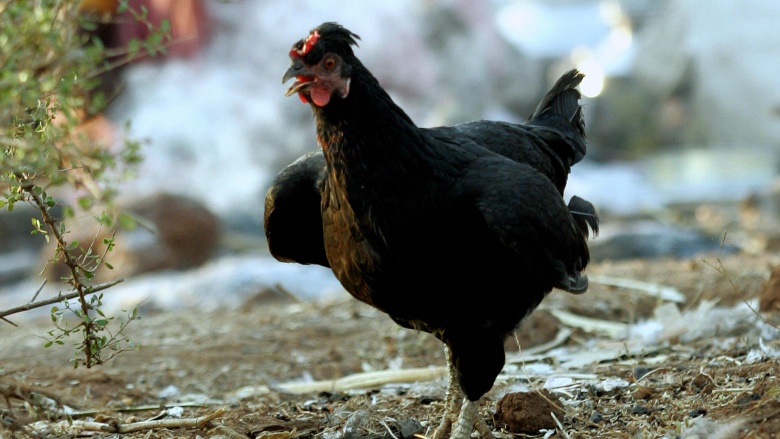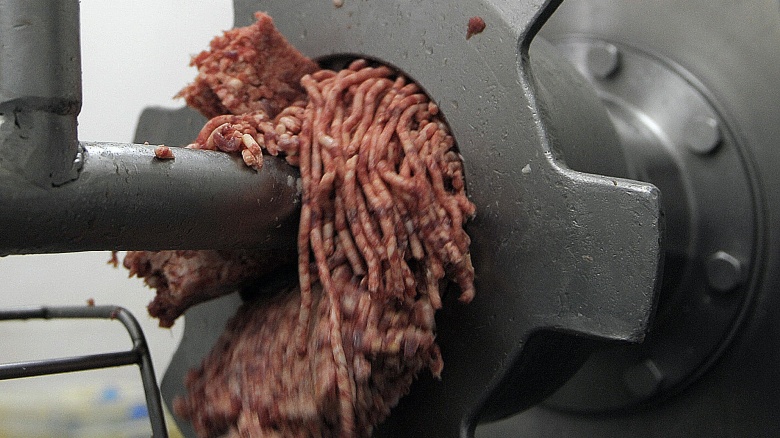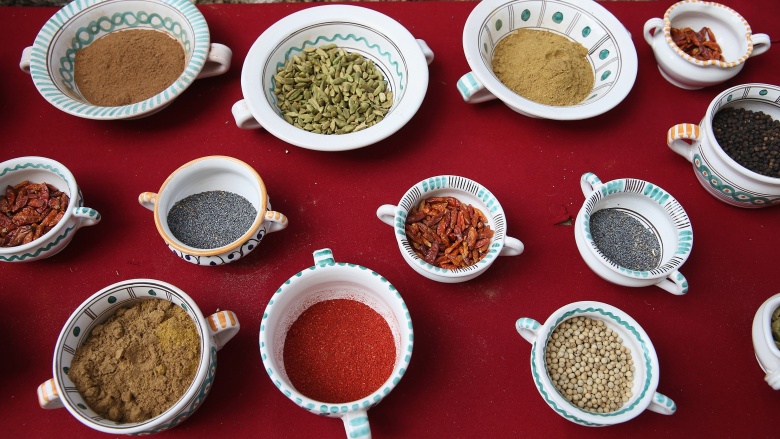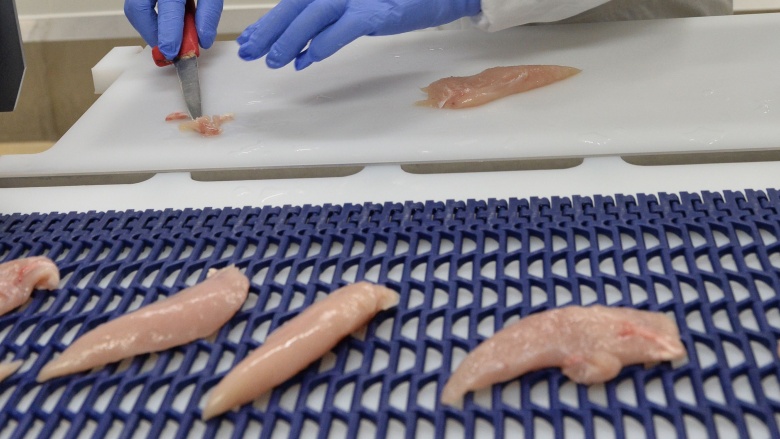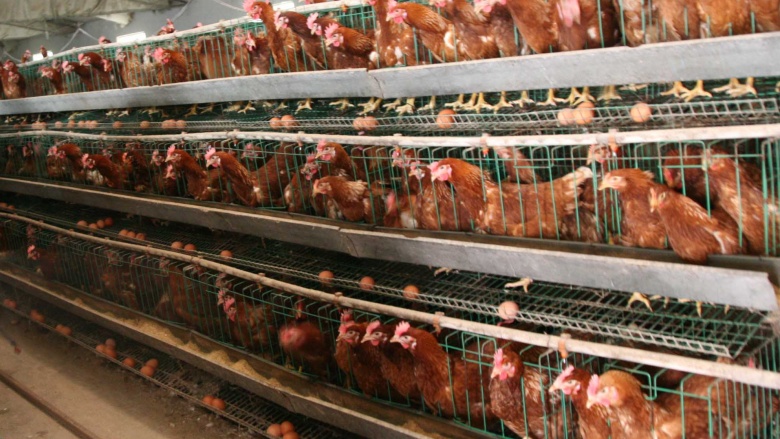Chicken Nugget Facts You Don't Want To Know
It's no secret that chicken nuggets are the farthest thing from home-cooking. Rumors of their rancid constitution have circulated for almost as long as they've existed. Sadly, some of the dark tales of these toothsome tidbits are true. So before reading, there's just one question you need to answer: would you like sweet and sour, ranch, or barbecue sauce with your horror show?
Original McNuggets
The chicken nugget craze began with the Mickey D's original Chicken McNuggets back in the 1980s. Anyone who ate them then knows the nuggets weren't always made with white meat. Biting into one treated the consumer to the sight of juicy, grey meat, which is probably what led some people to just start popping the nuggets into their mouths whole. The reason for this coloring? According to Super Size Me, original McNuggets were made from chickens too old and worn out to lay eggs anymore. Basically, they were a way for the golden arches to make money off poultry euthanasia.
Chicken mash
Around 2003, McDonald's began using younger chickens, and McNuggets became all-white meat. The taste improved greatly. But how that flavor found its way to the consumers' mouths hasn't changed all that much. Though no longer old and grey, all the fresh, young chicken meat is ground up into some kind of mash or slurry, according to McDonald's own ad campaign. This is then pressed into the various nugget shapes we all recognize. But don't think that's all that goes into a nugget. That's just the tip of the beak.
Lots of ingredients
Even though they're called chicken nuggets, chicken only makes up about half of a nugget, no matter which fast food chain they come from, according to a study by The American Journal of Medicine. In fact, the abstract of the report says "their name is a misnomer," as they are usually composed of mostly fat from a list of about 40 other ingredients. To be fair, most of those ingredients are things found in the average grocery store, like paprika, cornstarch, various oils, and baking soda. But some ingredients veer far and clear of the kitchen cupboard.
Incidental ingredients
In addition to the fat and spices (delicious, and a great name for a band), chicken nuggets contain some incidental ingredients as well. They're the kinds of things that should be expected from animals being ground into meat pulp. But that doesn't make them any less disturbing (or enticing, depending on a person's constitution). In the same American Journal of Medicine study, nuggets are said to also contain: cartilage, bone fragments, intestinal tissue, and blood vessels, to name a few. And because that's not enough to get the taste buds humming, other ingredients get thrown in there as well.
Aside from the spices and the incidentals, nuggets also contain components usually only found in university and professional chemistry labs. Chemicals like monocalcium phosphate, dextrose, and hydrogenated soybean oil all go into chicken nugget making. To be fair, while not found in the average kitchen, most of these names appear on soda cans, potato chip bags, or other kinds of food labeling. And it doesn't really matter whose nuggets they are. Most brands contain these ingredients. However, some of the other uses of these ingredients seem a little troubling.
Sodium Phosphates
Sodium phosphate is a fancy term meaning "salt." It's also an umbrella term for at least 20 chemicals. These phosphates are popular in food production because they act as leavening agents in baked goods and help control processed foods' pH balances, according to the New York Academy of Science. At the same time, they're also used to treat constipation—which, when you think about how you feel after eating these things, explains a lot. But worst of all, in large amounts, they "can cause serious kidney damage and possibly death," according to the U.S. National Library of Medicine. So with sodium phosphates' ubiquity, another source isn't really necessary.
Xanthin Gum
Another omnipresent additive, xanthan gum usually functions as a thickening agent and emulsifier in processed foods. It's also used as a lubricant by the oil drilling industry, and you know something's a tasty treat when it's used in oil drilling. For the most part, xanthan gum only appears in food in small amounts, about 0.1% of the entire item at most. It's only dangerous in large portions, but can cause things like intestinal bloating, diarrhea, and necrotising enterocolitis, according to the FDA. And since it's another pervasive preservative, most people probably consume enough of it throughout the day already.
Dimethylpolysiloxane
Though it appears only in trace amounts, allegedly, dimethylpolysiloxane isn't the most appetizing ingredient once its other uses are taken into consideration. According to BMC Pharmacology, it's used to treat head lice. It's also integral for making Silly Putty rubbery and stretchy. Nothing screams snack like Silly Putty, right? That's probably why it comes in a plastic egg. Most commonly, dimethylpolysiloxane is used as an anti-foaming agent in detergents, according to Ullmann's Encyclopedia of Industrial Chemistry. This antifoaming ability is also why it's used in cooking. But that raises another question: why do we need to worry about chicken nuggets foaming? Glad you asked.
Tertiary butylhydroquinone (TBHQ)
Tertiary butylhydroquinone, or TBHQ, is actually a highly effective antioxidant. So if you jumped on the antioxidant bandwagon in the late 2000s, TBHQ is for you. But you should also know that it's used in lacquers, resins, varnishes, and biodiesel, according to a paper about the stuff published in the scientific journal simply titled Fuel. And while both the FDA and European Food Safety Authority have determined TBHQ safe to consume in small doses, eating something that's next-to-impossible to pronounce is usually never a good idea. Still, all those chemicals probably aren't the most frightening thing found in chicken nuggets. This next one, however, is.
Gross Ingredients
Anyone who's ever been to a farm knows that chickens aren't the cleanest animals. Chickens defecate everywhere, and usually wind up standing in it, too. This is why, according to the Physicians Committee for Responsible Medicine, "fecal contamination is surprisingly common in chicken products in grocery stores." In fact, it was discovered that in one Texas store, 100 percent of the chicken products there were contaminated. And if it's common in grocery stores, commonality in fast-food chains can't be far from the realm of truth.
Ingredients vary from country to country
Don't let all of your chicken nugget hopes be dashed, though. The truth is that this list of ingredients is not universal throughout the world. CNN found that U.S. nuggets and nuggets in Great Britain differed pretty significantly. For starters, British chicken nuggets have less fat. Also, neither dimethylpolysiloxane nor TBHQ appear on the list of British nugget ingredients. Part of this is due to tastes differing between countries. But also, European countries have stricter food regulations than the States. So, if you ever have a hankering for some chicken nuggets, just hop on a jet and head across the pond. Your body will thank you.

